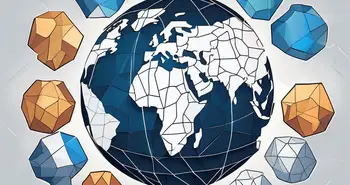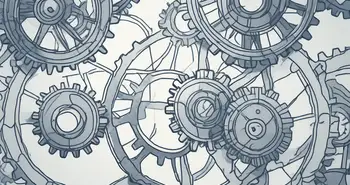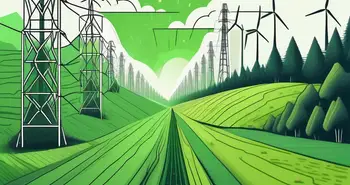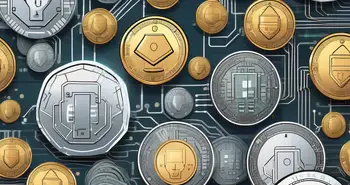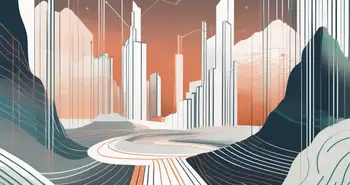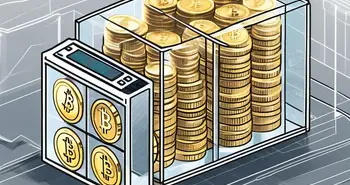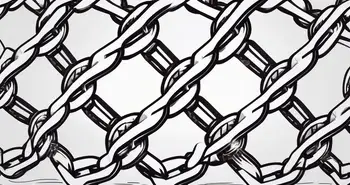How Proof of Burn Powers Blockchain Networks

In the ever-evolving world of cryptocurrencies, new consensus mechanisms constantly emerge, each promising to revolutionize the way we validate transactions on blockchain networks. One such mechanism that has gained considerable attention is “Proof of Burn.” In this comprehensive guide, I will take you on a journey to understand the concept, mechanics, advantages, and limitations of Proof of Burn, as well as comparing it with other popular consensus mechanisms. Let's dive in!
Understanding the Concept of Proof of Burn
Definition and Basic Principles
Proof of Burn is a consensus mechanism where participants intentionally destroy, or “burn,” a certain amount of cryptocurrency tokens to gain the right to validate transactions and create new blocks on a blockchain network. The principle behind Proof of Burn is that by sacrificing tokens, participants demonstrate their commitment to the network's security and provide a barrier against malicious actors seeking to infiltrate the system.
Unlike traditional consensus mechanisms like Proof of Work (PoW) or Proof of Stake (PoS), where participants invest in hardware or lock up their tokens respectively, Proof of Burn forces individuals to relinquish their tokens permanently. This unique approach brings several benefits and challenges, shaping the landscape of blockchain networks.
The Role of Proof of Burn in Cryptocurrency
Proof of Burn serves as an alternative to the energy-intensive Proof of Work mechanism, which is commonly associated with Bitcoin and Ethereum. By eliminating the need for resource-intensive mining equipment, Proof of Burn offers a more sustainable and environmentally friendly consensus mechanism.
Moreover, Proof of Burn reduces the risk of centralization by providing an opportunity for equal participation. Unlike Proof of Stake mechanisms, where those with higher token ownership have more influence, Proof of Burn allows anyone to contribute to the network's security, leveling the playing field for all participants.
Furthermore, the concept of Proof of Burn has sparked significant interest and debate within the cryptocurrency community. Advocates argue that it provides a fairer distribution of tokens, as participants are required to sacrifice their own holdings, ensuring that no single entity can accumulate a disproportionate amount of influence or control over the network.
Additionally, Proof of Burn incentivizes long-term commitment and dedication to the blockchain network. Participants who burn their tokens demonstrate their belief in the network's potential and are more likely to actively contribute to its growth and development. This commitment fosters a sense of community and collaboration among participants, further enhancing the network's security and resilience.
However, critics of Proof of Burn raise concerns about its potential for token hoarding. They argue that participants who burn a significant amount of tokens may become reluctant to spend or trade their remaining holdings, leading to a decrease in liquidity and hindering the network's overall functionality. These concerns highlight the need for careful consideration and ongoing research to address any potential drawbacks and optimize the implementation of Proof of Burn.
In conclusion, Proof of Burn offers a unique approach to consensus mechanisms in blockchain networks, providing a sustainable and inclusive alternative to traditional methods. By sacrificing tokens, participants demonstrate their commitment to the network's security and contribute to a more equitable distribution of influence. While it presents both benefits and challenges, the concept of Proof of Burn continues to shape the evolving landscape of cryptocurrency.
The Technical Mechanics of Proof of Burn
How Proof of Burn Works
In Proof of Burn, participants burn their tokens by sending them to an unspendable address or “burn address.” Once the tokens are sent to this address, they become inaccessible and are effectively removed from circulation. Participants must then provide proof, usually through cryptographic puzzles or other mechanisms, demonstrating that they have indeed burned the tokens.
This proof is crucial for participants to gain the right to validate transactions and propose new blocks. The more tokens burned, the higher the chance of being selected as a validator. This innovative mechanism incentivizes participants to preferentially burn more tokens, enhancing network security.
The Process of Burning Coins
Before you rush to burn your beloved tokens, it's important to understand the mechanics at play. Most blockchain networks utilizing Proof of Burn will provide explicit guidelines or software tools to facilitate the burning process smoothly and securely.
Typically, participants generate a burn transaction through their cryptocurrency wallet software, specifying the amount of tokens they wish to burn and the destination burn address. The burn transaction is then broadcasted to the network and recorded within the blockchain, making it publicly verifiable.
It's worth noting that the burning of tokens is irreversible. Therefore, it is essential to exercise caution and verify the accuracy of the burn transaction parameters to avoid any mistakes or loss of funds.
Advantages of Proof of Burn
Security Benefits
Proof of Burn introduces a unique layer of security to blockchain networks. By requiring participants to sacrifice their valuable tokens, it raises the cost of an attack on the network. Malicious actors would need to acquire and burn a significant number of tokens to gain control, making it economically unfeasible and deterring potential threats.
Additionally, Proof of Burn mitigates the risk of 51% attacks, where an attacker controls the majority of the network's hashing power. Since Proof of Burn mechanisms do not rely on computational resources, they are less susceptible to such attacks, enhancing the overall security of the network.
Sustainability and Efficiency
Unlike Proof of Work mechanisms that rely on computational power, Proof of Burn drastically reduces energy consumption and carbon footprint. By burning tokens instead of solving complex mathematical puzzles, blockchain networks powered by Proof of Burn require far fewer resources, making them environmentally friendly and more sustainable. As the world becomes increasingly conscious of our ecological impact, this advantage cannot be overlooked.
Criticisms and Limitations of Proof of Burn
Potential Risks and Drawbacks
While Proof of Burn offers many advantages, it is not without its limitations. One key concern is the potential for token hoarding. Participants with large token holdings may burn a significant portion of their tokens, making it harder for smaller players to compete for block validation rights. This concentration of power could undermine the decentralized nature of the network.
Furthermore, determining the appropriate amount of tokens to burn to secure the network can be challenging. If too few tokens are burned, the network's security may be compromised. Conversely, burning a disproportionately high number of tokens may hinder participation, discouraging new validators from joining the network.
Controversies Surrounding Proof of Burn
As with any innovative concept, Proof of Burn has not escaped criticism and controversy. Some argue that the burning of tokens leads to a deflationary environment, potentially driving up the value of the remaining tokens and creating economic inequality. Additionally, skeptics question the long-term viability of Proof of Burn and its ability to scale to accommodate growing blockchain networks.
Comparing Proof of Burn to Other Consensus Mechanisms
Proof of Burn vs Proof of Stake
Proof of Stake mechanisms, like Proof of Burn, aim to address the inefficiencies and environmental concerns associated with Proof of Work. However, there are notable differences between these two mechanisms. In Proof of Stake, participants lock up a portion of their tokens as collateral, giving them the right to validate transactions and create new blocks. In contrast, Proof of Burn requires the permanent destruction of tokens, ensuring a higher level of commitment and reducing the risk of network attacks. Both mechanisms have their merits and depend on specific network goals and requirements.
Proof of Burn vs Proof of Work
Proof of Burn and Proof of Work couldn't be more different. While Proof of Burn encourages the burning of tokens for network security, Proof of Work relies on computational power to solve complex puzzles. Proof of Burn's energy efficiency and sustainability make it an attractive alternative to Proof of Work, which has faced criticism due to its considerable electricity consumption. However, Proof of Work remains the preferred consensus mechanism for some well-established blockchain networks.
FAQ: Your Burning Questions Answered
-
- Q: Can I burn any type of cryptocurrency token?
A: The ability to burn tokens depends on the specific blockchain network you're participating in. Most networks only allow the burning of native tokens, while others may have additional functionality to burn specific tokens associated with their ecosystem.
-
- Q: How does Proof of Burn impact the value of the remaining tokens?
A: The impact on token value is a complex and dynamic issue influenced by various factors. While burning tokens can potentially reduce the supply, increasing demand and network usage may counterbalance the effect. It's essential to consider the broader market dynamics and tokenomics of the network to assess the potential impact on token value accurately.
-
- Q: Can I retrieve or access the burned tokens?
A: Once tokens are burned, they become permanently inaccessible and cannot be retrieved or accessed. It is critical to exercise caution and ensure the accuracy of the burn transaction parameters to avoid any loss of funds.
As an expert in the field, my personal advice is to thoroughly research and evaluate the specific characteristics and goals of each blockchain network before participating. Keep in mind that while Proof of Burn offers exciting advantages, it may not be the ideal consensus mechanism for every project.
I hope this ultimate guide has shed light on the fascinating world of Proof of Burn. Remember, the blockchain landscape continues to evolve rapidly, so stay informed and explore new possibilities as they emerge. Happy burning!
Ready to take your trading to the next level with the same innovative spirit as Proof of Burn? Look no further than Morpher, the revolutionary trading platform that leverages blockchain technology for a seamless investing experience. With zero fees, infinite liquidity, and the ability to trade a multitude of asset classes, Morpher is the perfect platform for modern investors who value flexibility and control. Sign up today and receive your free sign-up bonus to start trading with the benefits of fractional investing, short selling, and up to 10x leverage. Don't miss out on the unique trading experience that Morpher offers. Sign Up and Get Your Free Sign Up Bonus now and join the future of trading!

Disclaimer: All investments involve risk, and the past performance of a security, industry, sector, market, financial product, trading strategy, or individual’s trading does not guarantee future results or returns. Investors are fully responsible for any investment decisions they make. Such decisions should be based solely on an evaluation of their financial circumstances, investment objectives, risk tolerance, and liquidity needs. This post does not constitute investment advice.

Painless trading for everyone
Hundreds of markets all in one place - Apple, Bitcoin, Gold, Watches, NFTs, Sneakers and so much more.

Painless trading for everyone
Hundreds of markets all in one place - Apple, Bitcoin, Gold, Watches, NFTs, Sneakers and so much more.

